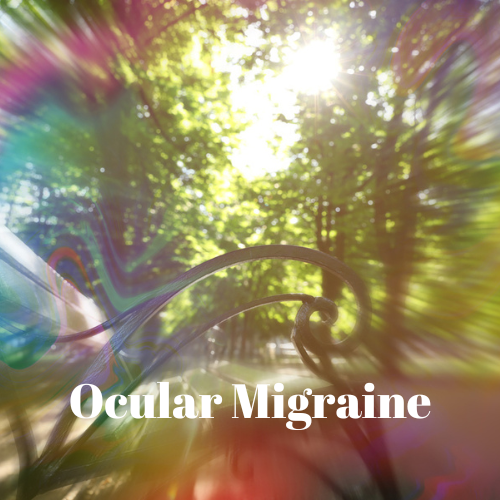What is an Ocular Migraine?


The term ocular migraine generally means a headache that is accompanied by changes in vision. But there are two different conditions that are referred to by this same name.
What is the difference between an ocular migraine and a retinal migraine?
Ocular migraine is a condition that involves a migraine headache accompanied by sensations that are often visual. The sensations that usually precede a migraine can be flashes of light, zigzagging patterns in your field of vision, blind spots, and shimmering spots in your field of view.
These visual disturbances last from a few minutes to about 30 minutes and a migraine headache usually develops about 60 minutes after the visual symptoms.
Although the visual disturbances can be frightening, the condition is usually not considered serious. Stress is a common trigger for ocular migraine and a family history of ocular migraine increases the chances of having them. About 50% of people who experience ocular migraines have a family history of ocular migraine headaches.
Other triggers have been identified and the way to determine your ocular migraine headache triggers is to keep a headache diary and note what you were doing or eating or drinking right before an ocular migraine headache.
Retinal Migraine
A retinal migraine is sometimes called an ocular migraine, but it is a different condition. A retinal migraine is a rare condition that causes repeated bouts of short-term diminished vision or blindness in just one eye. These bouts of diminished vision or blindness may precede or accompany a headache.
The partial or total loss of vision in one eye usually lasts 10 to 20 minutes before vision gradually returns and the headache may happen before, during, or after the vision attack.
A retinal migraine is caused by constriction of the blood vessels that nourish the eye. As soon as the blood vessels relax, blood flow to the eye returns and so does vision.
A retinal migraine can be triggered by several things:
- Stress
- Smoking
- High blood pressure
- Exercise
- High altitude
- Dehydration
- Low blood sugar
- Excessive heat
- Treatment for retinal migraine
Treatment varies based on the cause but includes pain relief for the headaches and a beta-blocker to relax blood vessels, or a calcium channel blocker to help prevent blood vessel contraction. Antidepressants and anti-epileptics can also be used as forms of treatment depending on the initiating circumstances for the restricted blood flow.
Complications of Retinal Migraine
Most retinal migraines are short-lived attacks followed by a complete recovery of vision. However, there is a small risk that the reduced blood flow of a retinal migraine may permanently damage the retina, so it is always good to be under the treatment of an ophthalmologist for your retinal migraines.
And because there are other serious brain diseases that can cause similar vision problems, if you experience the symptoms of what might be a retinal migraine, seek immediate medical attention.
Gregory Scimeca, M.D.
Ophthalmologist and Medical Director
The Eye Professionals
Our Locations
